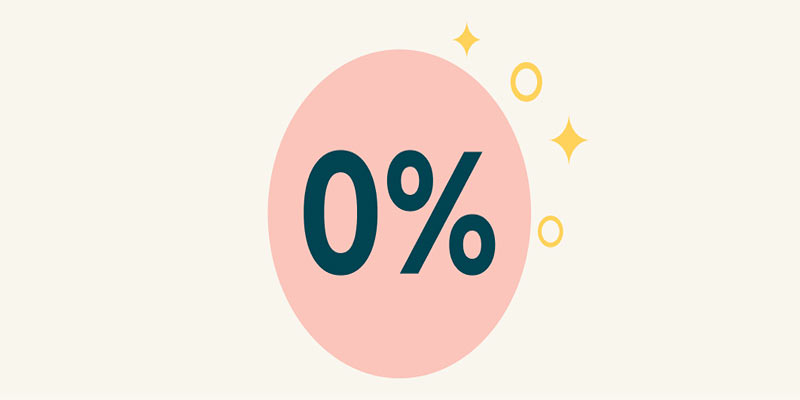Revolving Credit vs. Line of Credit
Jan 23, 2025 By Kelly Walker
Are you trying to make a major purchase but need more funds? Looking for a way to pay off an existing debt or cover unexpected costs but need help determining which type of credit is right for you? Revolving credit and Line of Credit are two popular financial tools that can help you access the money you need when you need it.
Understanding the differences between revolving credit and line of credit will ensure you select the best option to support your financial goals and objectives. Keep reading to learn more about which account is the most beneficial for your needs.
What is Revolving Credit and How Does it Work

Revolving credit is a loan that allows the borrower to make charges and payments as needed. This kind of loan is also known as a line of credit or open-ended credit because it allows users to draw funds up to an approved limit whenever needed.
The borrower repays their loan by making payments as they use it. Interest is charged on the outstanding balance and can add up quickly if there's a high balance from month to month.
What is the Line of Credit, and How Does it Work

A line of credit loan allows users to borrow money up to an approved limit whenever needed. This type of loan differs from a revolving credit loan in that the borrower can take out money but must return it by a certain date, usually with interest paid.
A line of credit requires the borrower to make regular payments on their loan balance within a certain period. If the loan isn't repaid by the deadline, interest will continue to accrue and must be paid.
Advantages and Disadvantages of Revolving Credit
Revolving credit is a loan agreement that allows the borrower to draw on the funds up to a certain amount. The advantage of revolving credit is that it provides access to a large amount of money, and in most cases, the interest rate may be lower than others all types of loans. Additionally, borrowers are not required to repay the full balance once and can repay a portion each month.
The disadvantage of revolving credit is that it can be difficult to keep track of the amount borrowed, as there is no end date, and the loan balance will continue to change depending on how much is paid off each month. Additionally not made regularly or on time. If payments are not made regularly or on time
Advantages and Disadvantages of Line of Credit
A line of credit is a loan agreement that allows the borrower to draw on funds up to a certain amount, but unlike revolving credit, the loan has an end date. The advantage of a line of credit is that it provides access to a large amount of money, and depending on the loan terms, interest rates may remain low. Additionally, because there is an end date, borrowers can easily track how much they have borrowed.
The disadvantage of a line of credit is that it requires the borrower to pay off the full balance by a certain date. If the borrower cannot pay off the full balance by this date, they may be charged additional fees. The interest rate can also be high if payments are not made regularly or on time.
Comparing the Benefits and Costs Involved in Both Types of Credit
When deciding between revolving credit and a line of credit, it is important to consider the benefits and costs associated with each.
For revolving credit, one potential benefit is that there are no restrictions on how much you can borrow at any given time, meaning that you can access funds as needed. Also, interest charges may be lower than those associated with a line of credit. On the other hand, depending on your credit limit, there may be limits on how much you can borrow, and lenders may require collateral to secure the loan.
On the other hand, a line of credit is generally more flexible than revolving credit as it allows borrowers to draw funds up to their approved credit limit as and when needed. Furthermore, lenders may provide more favourable terms for repayment, such as lower interest rates or flexible payment options. However, approval for a line of credit generally requires a certain amount of collateral, making it difficult for some individuals to qualify.
Ultimately, both types of credit can be beneficial depending on your situation. It is important to weigh all costs and benefits of each type before committing to either one. You can decide which product best suits your needs by considering the unique features and drawbacks of revolving credit versus a line of credit.
Tips for Finding the Right Type of Credit for Your Needs
If you're trying to decide between revolving credit and a line of credit, there are a few factors to consider. Both types of credit have their advantages and disadvantages.
A line of credit is generally best for those who need access to larger amounts of cash quickly and frequently. A major advantage of this type of credit is that you typically only have to pay interest on the money you use. This can be especially helpful when dealing with large, one-time expenses.
On the other hand, revolving credit is often ideal for those who need access to smaller amounts of cash over a longer period. This type of credit also offers an advantage over a line of credit because it's easier to build your credit score by using your card regularly.
It's important to research and weighs the pros and cons of each type of credit before deciding which is right for you. There are many factors to consider, such as interest rates, fees, repayment terms, etc. Ultimately, you should choose the type of credit that will best fit your needs and help you reach your financial goals.
FAQs
Is revolving credit a line of credit?
No, revolving credit and a line of credit are two credit products. Revolving credit is a loan that allows you to borrow up to your approved limit, while a line of credit provides access to money on an as-needed basis.
What are the 3 types of revolving credit?
The three types of revolving credit include home equity lines of credit, personal lines of credit, and credit cards.
What is an example of a line of credit?
An example of a line of credit is a bank loan allowing individuals to draw funds up to their approved limit as needed. Examples include home equity lines of credit, personal lines of credit, and small business loans.
Conclusion
To sum it up, revolving credit and a line of credit are two different but popular loan options that you can use to finance the purchase of goods or services. Both have advantages and disadvantages, so it will be important that you understand the costs and features involved before making a decision. However, if you consider the tips we mentioned above when searching for the best option for your needs, you should be able to find one that fits your budget and lifestyle.

Zero Interest Loans: Why You Should Beware

What Is an After-Tax Contribution?

U.S. Bank Review - The Best Bank in the US or Not?

What is a Like-Kind Exchange

How Do You Transfer Common Stock From One Broker to Another

Best Bloomberg Terminal Alternatives

PNC points Visa Credit Card Review

Avant Personal Loans Review

Best Boat Loans

